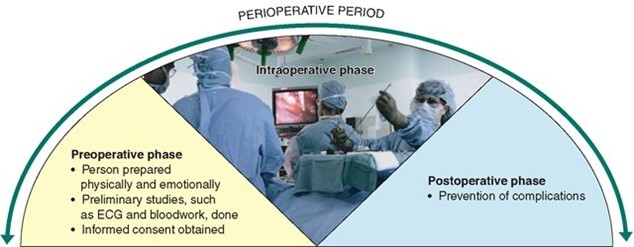Prior to an invasive examination of a hospitalized client, a consent form should be obtained. Which action best describes the responsibility of the practical nurse (PN)?
Explains the examination and asks the client to sign the consent form.
Obtains the medical record for the correct signed consent form prior to the examination.
Asks if the client understands the exam and why the consent form must be signed.
Witnesses the client's signature on the consent form after it is explained by the provider.
The Correct Answer is D
This is the best action that describes the responsibility of the PN because it ensures that the client has given informed consent for the invasive examination and that the consent form is valid and documented. The PN should verify that the provider has explained the examination, its risks and benefits, and alternative options to the client and that the client has agreed to proceed.
Nursing Test Bank
Naxlex Comprehensive Predictor Exams
Related Questions
Correct Answer is D
Explanation
The correct answer is choice D: Provide fluid and electrolyte replacement. Choice A rationale:
Isolating all infectious diarrhea victims is not the highest priority in this situation. While it is essential to prevent the spread of cholera, immediate medical intervention to treat those affected takes precedence.
Choice B rationale:
Administering prophylactic antibiotics as prescribed is not the highest priority because it focuses on prevention rather than treatment. In the case of a cholera outbreak, it is more critical to address the immediate needs of those already diagnosed.
Choice C rationale:
Administering cholera vaccines may be part of a preventive strategy, but it is not the highest priority during an active cholera outbreak. Vaccination takes time to develop immunity, and the focus should be on treating those already affected.
Choice D rationale:
Providing fluid and electrolyte replacement is the highest priority in managing cholera. Cholera is characterized by severe diarrhea and dehydration, which can lead to life-threatening complications. Promptly restoring fluids and electrolytes helps prevent shock and organ failure.
Correct Answer is ["B","C","D"]
Explanation
These are the information that the PN should obtain prior to administering pain medication to an adult postoperative client because they help to assess the client's current pain level, response to previous medication, and need for further intervention. The PN should also document this information in the medical record and report any changes or concerns.

A. Height and weight of client prior to admission are not relevant for administering pain medication and may not affect the dosage or route of the medication.
E. History of pain medication use during the past year is not relevant for administering pain medication and may not indicate the client's tolerance or preference for the medication.
Whether you are a student looking to ace your exams or a practicing nurse seeking to enhance your expertise , our nursing education contents will empower you with the confidence and competence to make a difference in the lives of patients and become a respected leader in the healthcare field.
Visit Naxlex, invest in your future and unlock endless possibilities with our unparalleled nursing education contents today
Report Wrong Answer on the Current Question
Do you disagree with the answer? If yes, what is your expected answer? Explain.
Kindly be descriptive with the issue you are facing.
